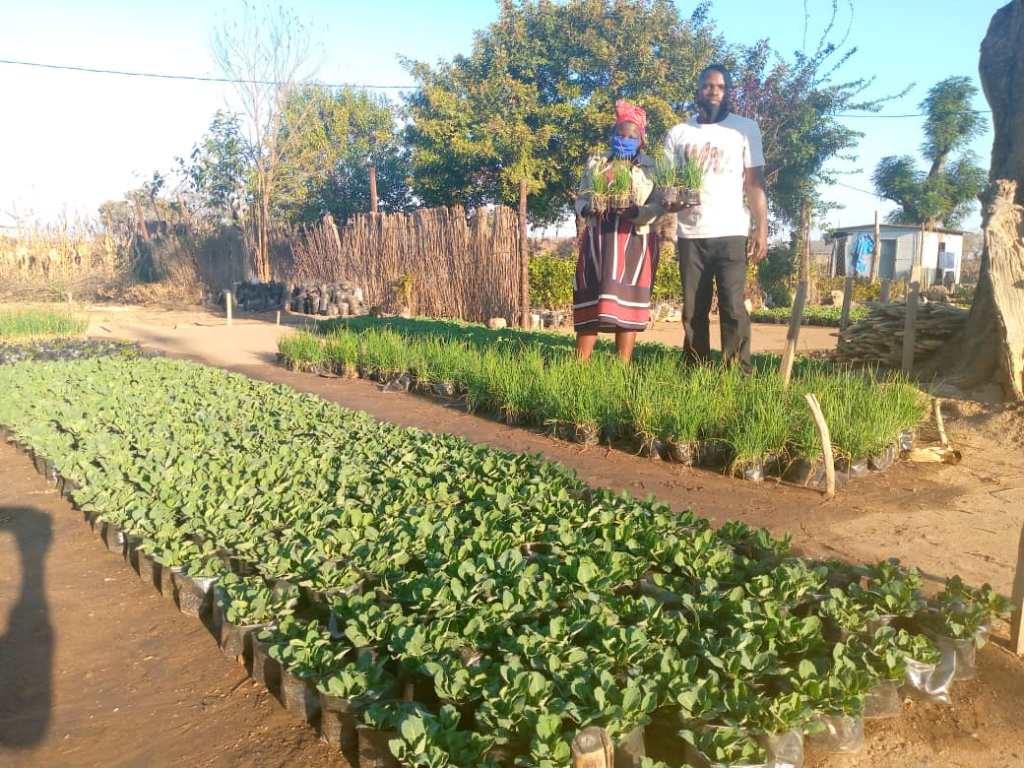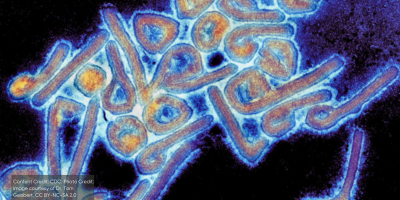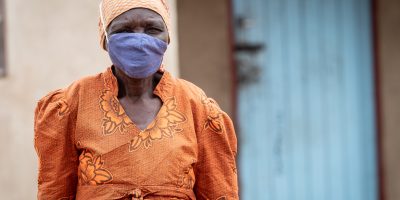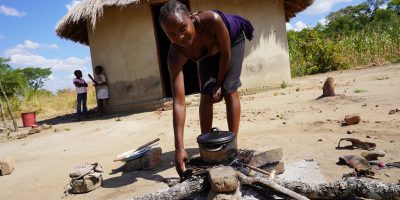The third COVID-19 wave has firmly arrived in Zimbabwe’s rural areas. This is no longer the ‘rich person’s disease’ of those based in town. The number of cases and sadly deaths has surged across our rural study areas in the last month. This is a picture reflected across the country and indeed the region, with large increases since our last report.
After being spared for so long, why are the rural areas only now being affected? This was the topic of the conversations in our research team this month. It is clear that the Delta variant is proving extremely dangerous. Having spread from a small isolated outbreak in Kwekwe just a few weeks ago and through imports from across the border in South Africa, it seems to be the dominant variant now. Highly infectious and easily transmissible, the fact that rural people don’t move much and work and live outside makes much less difference in the face of this variant it seems.
There have been deaths recorded in all our study sites in the past weeks, with others being buried in the area having died in South Africa or elsewhere in the region. Many others have contracted the disease and have been battling it at home while isolating. Some of the most vulnerable are the front-line workers who have frequent contact with people, while living in the rural areas. Nurses, health workers, agricultural extension workers, police and others have all be noted as people who have contracted COVID-19 in our sites in the last weeks, very often passing it on to others. Mr FC is a 68 year old health worker and farmer in Wondedzo. He contracted the disease and went to the COVID quarantine centre. However, he was quickly discharged due to pressure on beds:
“The doctor and nurses decided to send me home for self-isolation paving way for the ever in-coming COVID-19 victims. I was given different drugs by the nurses, but I supplemented these by taking herbal teas. My son used to bring lemons, garlic, onion and mutsviri herbal tea. I used to cut onion or garlic into pieces where I could place underneath my pillow. Crushed onion was used to massage my chest and nose. All my belongings at home were heavily disinfected and I was given my own room where I stayed alone. All the food was brought by my son. I was given light food like crushed potatoes, rice, porridge, beans and mincemeat as swallowing was not easy. In the end, on the 15th day, I felt better and there was then slow improvement until I returned to work, when I got the disease again as I am in contact with people. This time fortunately it was not so severe and we now know how to treat it.”
Vaccine demand and compulsion
The demand for vaccination has risen significantly too as a result of the surge in disease and concerns about severe illness and death. Queues have been forming at vaccination centres in all our study sites, but demand far exceeds supply, and the many return home disappointed. While nationally over 10% of the population have had one dose, there is much further to go even amongst the older, more vulnerable age groups.
Zimbabwe’s vaccine programme has been the envy of neighbouring countries, but it does remain heavily reliant on supplies from China (and to a lesser extent Russia and India). The J&J single dose vaccine is now (finally) approved locally, so maybe there will be an expansion of supply soon, but with China now experiencing new outbreaks some worry that politically-driven gifts of free vaccines to Zimbabwe will be less of a priority.
Despite claims that vaccination will always be voluntary there have been recent moves to make it compulsory among civil servants, with memos circulating across all departments requiring reporting of coverage. This has provoked quite a bit of debate, including within our team. Among those who have been hesitant about the vaccine, several commented that they will get it now as they need to keep the job. The old tension between public health and individual freedoms is once again being played out.
Limited state capacity: reliance on local innovations
This latest surge is both more severe and more widespread than before. The state, despite its best efforts, does not have the capacity to respond effectively. Health services are overwhelmed, funeral parlours are full, drugs are in short supply and vaccines insufficient. Whether via treatment or prevention, the response has to be centred on local people, their ingenuity and capacities. As we have mentioned in previous blogs, there has been a blossoming of innovation and entrepreneurship in response to the pandemic, particularly focusing on traditional remedies.
The now-famous Zumbani herbal tea is in huge demand, and those who collect it and process it are making good money. Diaspora Zimbabweans based in South Africa are sourcing it in large quantities as an effective remedy. Team members comment that they have abandoned Tanganda (black tea leaves) for herbal teas and remedies. A few months ago, they did not like them much, but now such teas are the preferred beverage several times a day. For those who get sick there is now a common health folklore about what the most effective treatments are.
This is shared through various routes. One of our informants swore by a video she had seen on WhatsApp from a Nigerian woman extolling the virtues of steaming and certain breathing exercises. Others listen to what neighbours have done and share locally. Even our research team, now known to be the contributors to these blogs – which are often shared further through social media and in local newspapers – are asked for advice. “We are the new doctors!”, one quipped. While there is much misinformation on social media spread through rumours among relatives, neighbours and church members alike, there is also lots of useful advice. Sifting through this competing knowledge claims and making choices in the face of disease is a critical part of living with COVID-19 today.
Alongside traditional herbs and remedies, lemon, ginger, garlic and onion are the most common ingredients for local remedies and are used as teas, chest/body presses, inhalation steaming and so on. Mrs MC contracted COVID recently and explained:
“I had two regimes, which is Zumbani mixed with lemon as tea taken twice a day, morning and afternoon. I also had ginger and garlic tea, which I took at sun down and late at night. I also used to chew raw onion regularly as means of opening the nasal system. I had learnt of these traditional medicines via social media, friends and relatives, I also learnt of the use of crushed onion wrapped in a transparent cloth, which then could be pressed against my chest whenever I go to sleep. It is now a habit in my family to take the traditional medicines all the time”.
The demand for such products is massive. Mrs Kwangwa has a nursery in Masvingo in the compound of her husband’s National Railways of Zimbabwe house (see pictures). They started the project back in 2014 after she graduated from Masvingo Polytechnic with a certificate in agriculture. They have been growing vegetable seedlings, fruit trees, flowers and so on, with a wide market across the province and beyond. In COVID times they have shifted focus – and now the big crops are onions and lemon tree seedlings, with plans for expanding into garlic and ginger growing once they secure a bigger plot with more reliable water supplies. As we noted in earlier blogs, everyone is now a gardener, and Mrs Kwangwa commented that her customers have expanded. “COVID-19 has popularised agriculture – I now have doctors, engineers, teachers coming for seedlings as well as the normal farmers.” Everyone wants to buy products that can help them fight infections. It’s a profitable business and they bought a Nissan Sedan and a Mazda truck to transport water, leaf litter and seedlings, and they now employ three people.
If the world is going to live with COVID-19 (in its now many forms) forever, even with protections from vaccines and so on, then the sort of innovations and investments that Mrs Kwangwa has made will continue to be vital. Research on new agricultural products and wild product harvesting and processing will be needed to support a longer-term strategy for responding to a seasonal, hopefully less virulent coronavirus into the future.
Disease spreading events
While traditional remedies help fight infection and treat disease, other behaviours may reduce transmission. People are now used to the idea of keeping a distance, wearing a mask, not going to large gatherings and so on, but it’s difficult to do this in normal life. Transport for example is rare because of restrictions and so people must resort to informal, illegal means. Such mushikashika transport is always packed, often with few measures to reduce infection. Cross-border movement is essential for many people’s businesses, especially in those study sites near the borders such as Chikombedzi and Matobo, but people have to pay the bribes to cross illegally so their business can survive. Different people commented: “It’s better to die of corona than hunger”; or “I have to carry on, I cannot let my business collapse. What will I do to survive?”; or “We just have to learn to live with this virus, we don’t have any other safety net”.
In our sites, our team (now all expert field epidemiologists too…) identified a number of spreader events. For example, one malaicha – an informal transporter of goods – became infected and spread the disease widely as a result of contacts made through his business. Equally, particular shebeens (illegal drinking places) have become a focus for outbreaks, as people gather in packed rooms, as the official bars and restaurants remain closed. Although church gatherings are officially banned and most churches comply, some – such as the Apostolic churches – resist and hold their (often huge) gatherings at night. It being winter, people huddle together and so become infected.
Perhaps the most risky gatherings are funerals. With more people being buried – sometimes several a week in a village – funerals bring together people from across the country as relatives gather to pay condolences. Village neighbours come to pay their respects and commiserate with the family. Viewing the body happens in closed spaces, within huts while the family sits nearby. With it being winter, more happens inside in closed spaces with limited ventilation, and no one knows if wood smoke disrupts the virus or makes you more susceptible. Funerals are of course important moments in any society, and are especially so in rural Zimbabwe and for the older (more vulnerable) generation. Children in the diaspora have been beseeching their parents to avoid funerals in their villages, but with little effect. How can you not attend, at least for a short time? The traditions and rituals of passing are so significant that even a public health crisis cannot prevent them happening.
While official case numbers and deaths are thankfully declining in the last few days, this third wave has brought with it new challenges, especially in the rural areas where, for the first time, infection, severe disease and deaths are being seen on a much larger scale. There are many hypotheses as to why this is only happening now, but much must be to do with the Delta variant, which is effectively a new disease. The state is doing its best, but can only do so much. As before, rural Zimbabweans are left to cope on their own, with important innovations supporting the struggle against the disease, both for now in the midst of the pandemic and likely into the future, as this is clearly not going to go away completely.
Thanks to the team from Mvurwi, Chatsworth, Wondedzo, Masvingo, Hippo Valley, Chikombedzi and Matobo and to Felix Murimbarimba for coordinating. This is the 17th instalment of our on-going real-time monitoring of the COVID-19 situation in rural Zimbabwe, starting in March 2020.
This post was written by Ian Scoones and first appeared on Zimbabweland









